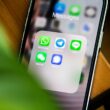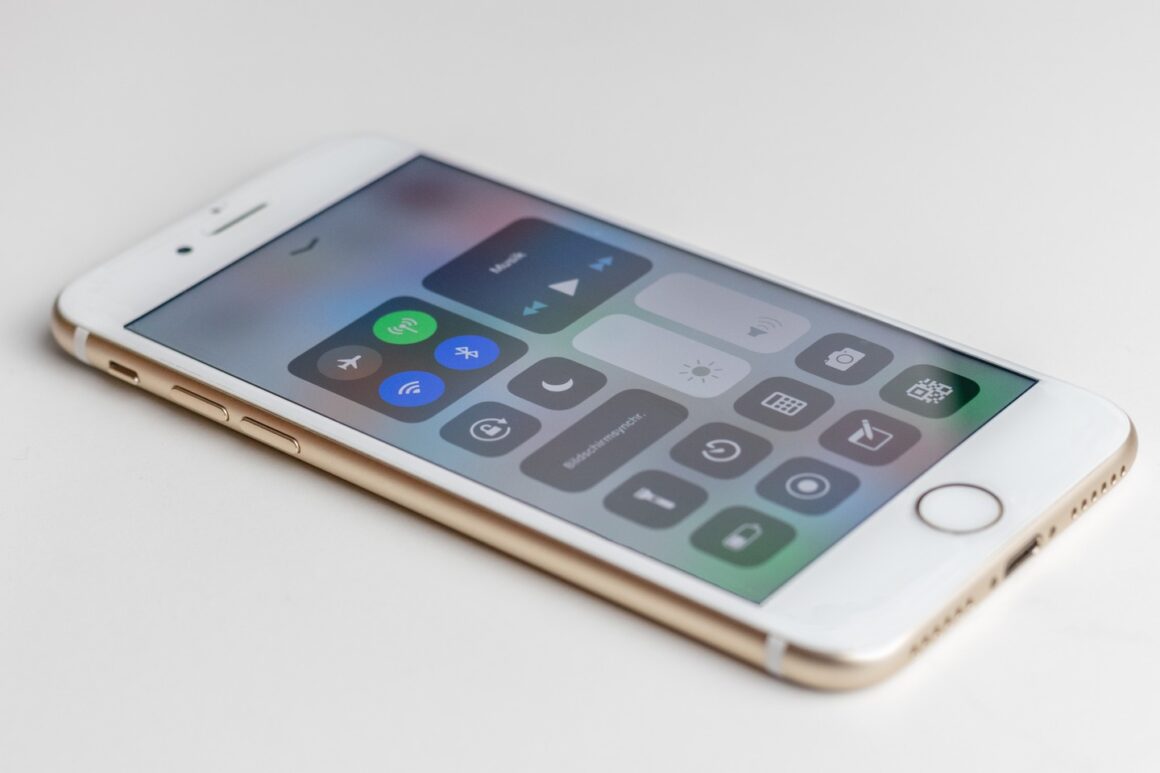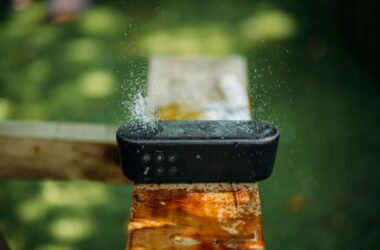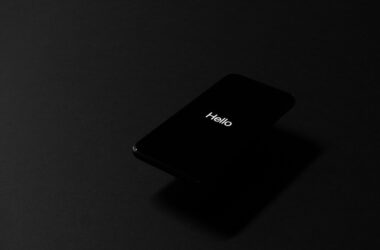I. Introduction
In an era where seamless connectivity is not just a convenience but a necessity, encountering Bluetooth pairing issues with your iPhone can be more than just a minor annoyance—it disrupts the rhythm of our tech-reliant lives. Whether it’s a failure to detect Bluetooth devices, erratic connections, or challenges in pairing with car systems or wireless headphones, these problems are common enough to be a significant concern for many iPhone users.
The importance of this topic in today’s technology-driven world cannot be overstated. Our reliance on smartphones has escalated to the point where even a minor hiccup in connectivity can lead to significant disruptions in both personal and professional spheres. From missing important calls to failing to enjoy your favorite tunes during a workout, the impact of these issues is widespread.
In this blog post, we aim to address these challenges head-on. Recognizing the pervasive nature of iPhone Bluetooth pairing issues, our goal is to provide a comprehensive guide filled with practical solutions. From quick fixes that you can do in minutes to more advanced troubleshooting techniques, this guide will serve as your go-to resource for all iPhone Bluetooth pairing problems.
Stay tuned as we delve into the world of iPhone Bluetooth technology, exploring common causes of pairing issues and offering step-by-step solutions to get you back on track. Whether you’re a tech novice or a seasoned iPhone user, our guide promises to provide valuable insights and easy-to-follow fixes that will restore your device’s connectivity in no time.
II. Understanding iPhone Bluetooth Technology
Before we dive into solving the myriad of Bluetooth pairing issues, it’s crucial to have a basic understanding of what Bluetooth technology is and how it functions in iPhones.
What is Bluetooth Technology?
Bluetooth is a wireless communication technology that allows the transfer of data between different electronic devices over short distances. It uses radio waves in the 2.4 to 2.485 GHz frequency band to create a secure, low-power, and low-cost network. In iPhones, Bluetooth is commonly used for connecting to wireless headphones, car systems, smartwatches, and other peripherals.
How Does Bluetooth Work in iPhones?
In iPhones, Bluetooth functionality is embedded in the operating system, allowing for easy connectivity and management of various devices. When you enable Bluetooth on your iPhone, it starts scanning for devices within range. Once a device is detected, a secure connection can be established using a process known as “pairing.” This involves an exchange of information between your iPhone and the device, creating a link for data transmission.
Common Reasons for Bluetooth Pairing Issues in iPhones
- Interference: Bluetooth operates in the 2.4 GHz frequency range, which is also used by many other devices, including microwaves and Wi-Fi routers. This can lead to interference and connectivity issues.
- Distance and Obstacles: Bluetooth has a limited range, typically around 10 meters (33 feet). Physical obstacles like walls or doors can further limit this range.
- Outdated Software: Running an outdated version of iOS can lead to compatibility issues with newer Bluetooth devices.
- Device Overload: iPhones can remember a significant number of Bluetooth devices, but having too many devices listed can sometimes cause problems with pairing.
- Hardware Issues: While less common, hardware problems with either the iPhone or the Bluetooth device can prevent successful pairing.
- Battery Levels: Low battery levels on your iPhone or the Bluetooth device can impact the ability to pair successfully.
- Pairing Process: Sometimes, the specific steps required for pairing are not correctly followed, leading to unsuccessful attempts.
By understanding the basics of Bluetooth technology in iPhones and recognizing the common causes of pairing issues, you are better equipped to identify and resolve these problems. In the following sections, we will delve into practical solutions, starting with quick fixes that can often resolve your Bluetooth woes swiftly and efficiently.
III. Quick Fixes for iPhone Bluetooth Pairing Problems
Bluetooth pairing issues on your iPhone can often be resolved with a few simple steps. These quick fixes are easy to execute and can save you a lot of time and frustration.
Restarting Your iPhone: The First Simple Step
Sometimes, the classic “turn it off and on again” method is all it takes to solve a myriad of technical issues, including Bluetooth pairing problems.
- For iPhones with Face ID: Press and hold the side button and either volume button until the power off slider appears. Drag the slider to turn your device off, and then press and hold the side button again to turn your device back on.
- For iPhones with a Home button: Press and hold the top (or side) button until the power off slider appears. Drag the slider, then press and hold the top (or side) button again to turn your device back on.
After restarting your iPhone, try pairing with your Bluetooth device again.
Checking Bluetooth Settings: Ensuring Visibility and Functionality
Your iPhone’s Bluetooth settings offer several options that you should check:
- Turn Bluetooth Off and On: Go to Settings > Bluetooth, turn off Bluetooth, wait for a few seconds, then turn it back on.
- Check Visibility: Ensure your iPhone is discoverable while in the Bluetooth settings menu. Your iPhone will be visible to other devices only when the Bluetooth page is open.
- Proximity and Interference: Make sure there are no physical obstructions between the devices and that they are within the typical Bluetooth range (about 33 feet or 10 meters).
Forgetting and Reconnecting Bluetooth Devices: A Step-by-Step Guide
If the above steps don’t work, “forgetting” the Bluetooth device and reconnecting can often reset any errors in the connection.
- Forgetting the Device:
- Go to Settings > Bluetooth.
- Find the device you’re having issues with and tap the info icon (i) next to it.
- Tap “Forget This Device” and confirm your choice.
- Reconnecting the Device:
- Make sure the Bluetooth device is in pairing mode (consult the device’s manual if necessary).
- Go back to Settings > Bluetooth on your iPhone.
- Wait for the device to appear in the list of devices and then tap on it to reconnect.
These quick fixes can resolve many of the common Bluetooth pairing issues you might encounter with your iPhone. However, if these steps do not solve the problem, it may be necessary to delve into more advanced troubleshooting techniques, which we will cover in the next section of this guide.
IV. Advanced Troubleshooting Techniques
When the basic fixes don’t resolve your iPhone’s Bluetooth pairing issues, it’s time to try some advanced troubleshooting techniques. These steps delve deeper into the system settings and can often resolve more complex problems.
Updating iOS: How to Ensure Your iPhone is Up-to-Date
Keeping your iPhone’s software up-to-date is crucial for ensuring compatibility with various Bluetooth devices and for the overall performance and security of your device.
- Check for Updates: Go to Settings > General > Software Update. Your iPhone will check for available updates.
- Install the Update: If an update is available, tap Download and Install. Ensure your iPhone is connected to Wi-Fi and plugged into power during the update process.
- Automatic Updates: To automate future updates, go to Settings > General > Software Update > Customize Automatic Updates and turn on “Download iOS Updates” and “Install iOS Updates.”
Resetting Network Settings: A Potent Solution for Persistent Issues
Resetting your network settings can resolve underlying issues related to Bluetooth and other network connections. This step will erase all network settings, returning them to factory defaults, so remember you will need to re-enter Wi-Fi passwords and reconfigure other network settings afterward.
- Go to Settings: Open the Settings app on your iPhone.
- General Settings: Tap on General and scroll down to find Reset.
- Reset Network Settings: Select Reset Network Settings, enter your passcode if prompted, and confirm your decision.
After the reset, your iPhone will restart. Once it’s back on, try pairing your Bluetooth device again.
Dealing with Compatibility Issues: Tips for Pairing Various Devices
Sometimes, the issue isn’t with your iPhone but with the Bluetooth device you’re trying to connect to. Here are some tips for dealing with compatibility issues:
- Check Device Compatibility: Ensure the Bluetooth device is compatible with your iPhone model and iOS version.
- Update Device Firmware: If the Bluetooth device has firmware updates (common with smart devices and headphones), ensure it’s updated to the latest version.
- Reset the Bluetooth Device: Many devices have a way to reset or restart them, which can often resolve pairing issues. Refer to the device’s manual for instructions.
- Consult Support and Forums: If you’re struggling with a particular brand or type of device, check the manufacturer’s support site or forums for specific pairing instructions or known issues with iOS devices.
By following these advanced troubleshooting techniques, you can resolve more persistent Bluetooth pairing problems. However, if you’re still encountering issues after trying these steps, it might be a good idea to contact Apple Support or visit an Apple Store for further assistance.
V. Step-by-Step Guide to Pair Bluetooth on iPhone
Pairing Bluetooth devices with your iPhone should be a straightforward process. Below are detailed instructions on how to pair common devices, along with troubleshooting tips for each step.
Pairing a Bluetooth Headset or Earbuds
- Enable Pairing Mode on Your Headset/Earbuds: Usually, this involves holding a button until a light starts blinking or a sound is heard. Consult the device’s manual for specific instructions.Troubleshooting: If the device doesn’t enter pairing mode, try resetting it or charging it fully before attempting again.
- Open Bluetooth Settings on Your iPhone: Go to Settings > Bluetooth and ensure Bluetooth is turned on.
- Select the Device from the List: Your device should appear under “Other Devices.” Tap on it to pair.Troubleshooting: If the device doesn’t appear, ensure it’s in pairing mode and close to your iPhone. Refresh the list by turning Bluetooth off and on.
Pairing with a Car Audio System
- Set Your Car’s System to Pairing Mode: This varies between models, so refer to your car’s manual. Typically, it involves navigating through the audio system’s menu.Troubleshooting: If you can’t find the pairing option, consult your vehicle’s user manual or the manufacturer’s website.
- Pair from Your iPhone: In the Bluetooth settings on your iPhone, select your car’s system from the list of available devices.Troubleshooting: If your car doesn’t show up, ensure that no other device is connected to your car’s system. Sometimes, having multiple devices paired can cause issues.
Pairing with Wearables (e.g., Smartwatches)
- Activate Pairing Mode on the Wearable: Often, this is done through the device’s settings menu.Troubleshooting: If the wearable doesn’t enter pairing mode, a restart of the device might be necessary.
- Pair from iPhone: Open the Bluetooth settings on your iPhone and select the wearable from the list.Troubleshooting: Ensure the wearable is charged and within range. If it still doesn’t appear, try restarting both your iPhone and the wearable.
General Troubleshooting Tips
- Refresh Bluetooth Connections: If at any step the device doesn’t appear, refresh your iPhone’s Bluetooth by turning it off and on.
- Check for Interferences: Avoid obstacles and electronic interferences between your iPhone and the Bluetooth device.
- Ensure Compatibility: Verify that the device you are trying to pair is compatible with your iPhone model and iOS version.
- Software Updates: Keep both your iPhone and the Bluetooth device updated to the latest software versions.
By following these steps and tips, you should be able to pair most Bluetooth devices with your iPhone successfully. Remember, the process can vary slightly depending on the specific device, so always refer to the device’s user manual for precise instructions.
VI. Common iPhone Bluetooth Pairing Errors and Their Fixes
Even with the best of efforts, you might encounter specific error messages or challenges when trying to pair your iPhone with a Bluetooth device. Let’s explore some of these common errors and their respective solutions.
Addressing Specific Error Messages: What They Mean and How to Fix Them
- “Connection Unsuccessful” or “Device Not Supported”
- Meaning: This error typically indicates a compatibility issue between your iPhone and the Bluetooth device.
- Fix: Check if both devices are compatible. If they are, try resetting the network settings on your iPhone (Settings > General > Reset > Reset Network Settings).
- “Device Not Found” or “Unable to Connect”
- Meaning: Your iPhone is having trouble locating or connecting to the Bluetooth device.
- Fix: Ensure the Bluetooth device is in pairing mode and in range. Restart both devices and try pairing again.
- “Bluetooth Unavailable” or “Bluetooth Error”
- Meaning: This can indicate a problem with your iPhone’s Bluetooth software or hardware.
- Fix: Restart your iPhone. If the problem persists, consider resetting all settings or consulting with Apple Support.
Solving iPhone Bluetooth Pairing Challenges with Different Devices
- Headphones or Earbuds Not Pairing
- Fix: Ensure they are fully charged, in pairing mode, and not currently connected to another device. Resetting the headphones or earbuds can also help.
- Car Bluetooth Systems Not Connecting
- Fix: Delete old Bluetooth connections from your car system if it has reached its limit. Ensure your car’s audio system software is up-to-date.
- Wearable Devices (like Smartwatches) Not Pairing
- Fix: Update the wearable’s firmware. Restart both your iPhone and the wearable device and attempt pairing again.
- Other Smart Devices (like Speakers) Having Issues
- Fix: Check for any specific app needed for the device, update the firmware, and ensure it’s in proper pairing mode. Sometimes, a factory reset of the smart device helps.
In each case, patience and a methodical approach can go a long way. Bluetooth connectivity issues can be tricky, but with the right steps, they are often solvable. If you continue to face problems, it may be worth reaching out to the manufacturer of the Bluetooth device or to Apple Support for further assistance.
VII. Preventative Measures for Future Bluetooth Issues
To minimize future Bluetooth pairing issues and ensure a smooth experience, it’s essential to follow some best practices. Here are key strategies to maintain optimal Bluetooth connectivity with your iPhone.
Best Practices for Maintaining Bluetooth Connectivity
- Regular Software Updates: Keep your iPhone updated with the latest iOS version. This not only enhances security but also ensures compatibility and optimal performance of Bluetooth technology.
- Manage Your Bluetooth Connections: Regularly review and manage the list of devices paired with your iPhone. Remove devices you no longer use to prevent clutter and potential conflicts.
- Avoid Interference: Be aware of the physical environment. Devices like microwaves, Wi-Fi routers, and even USB 3.0 ports can cause interference with Bluetooth signals. Try to minimize these interferences, especially when pairing or using Bluetooth.
- Charge Your Devices: Low battery levels on either your iPhone or the Bluetooth device can affect connectivity. Ensure both devices are sufficiently charged.
- Use Trusted Accessories: Opt for certified or recommended Bluetooth accessories. Cheaper, uncertified accessories may not adhere to the Bluetooth standards necessary for smooth operation with your iPhone.
How to Keep Your iPhone’s Bluetooth Technology Running Smoothly
- Restart Regularly: Periodically restart your iPhone. This simple step can clear temporary glitches and improve overall performance, including Bluetooth functionality.
- Check for Hardware Issues: If you consistently face Bluetooth issues, it might be worth checking if there’s a hardware problem with your iPhone. Visit an Apple Store or a certified service provider for a diagnostic.
- Educate Yourself on New Features: Stay informed about any new Bluetooth-related features or updates in iOS. Apple occasionally introduces enhancements that could change how you use Bluetooth.
- Use Bluetooth Wisely: When not in use, turn off Bluetooth to save battery life and reduce exposure to potential vulnerabilities. However, remember to turn it back on before attempting to use Bluetooth features.
- Back-Up Your iPhone: Regular backups ensure that you can restore your settings and preferences in case you need to reset your phone or encounter significant issues.
By incorporating these preventive measures and best practices, you can significantly reduce the frequency and impact of Bluetooth pairing issues. Keeping your iPhone’s Bluetooth technology well-maintained not only enhances its performance but also ensures a more seamless and frustration-free user experience.
Conclusion
In this comprehensive guide, we have navigated through the often-tricky waters of iPhone Bluetooth pairing issues. From the basic steps of restarting your iPhone and checking Bluetooth settings, to more advanced troubleshooting techniques like updating iOS and resetting network settings, we’ve covered a range of solutions designed to address and resolve these common challenges. Additionally, we delved into specific error messages and their fixes, and offered preventive measures to help maintain a smooth Bluetooth experience on your iPhone.
Remember, technology, while sophisticated, isn’t perfect. Encountering Bluetooth issues with your iPhone is a common experience, but with the solutions provided in this guide, you’re now equipped to tackle these problems effectively. We encourage you to apply these tips and strategies the next time you face a Bluetooth pairing issue.
Your experiences and feedback are invaluable. If you’ve tried any of these solutions, or if you have other tips and tricks that have worked for you, we would love to hear from you. Sharing your experiences not only helps us improve our content but also assists fellow readers who might be facing similar issues.
Feel free to leave your comments, suggestions, and stories below. Let’s continue to help each other navigate the evolving world of technology, making our daily digital interactions as seamless as possible.
Thank you for reading, and here’s to hassle-free Bluetooth connections on your iPhone!
FAQs Section
In this section, we’ll address some frequently asked questions about iPhone Bluetooth issues, providing you with quick, informative answers to enhance your understanding and troubleshooting skills.
Q1: Why won’t my iPhone find any Bluetooth devices?
A: If your iPhone can’t find any Bluetooth devices, first ensure Bluetooth is enabled on your iPhone and the device you’re trying to pair. Also, check that the devices are within range (usually about 33 feet or 10 meters) and that there are no physical or electronic interferences. If these factors are all in check, try restarting your iPhone and the Bluetooth device.
Q2: Can I connect multiple Bluetooth devices to my iPhone at once?
A: Yes, your iPhone can be connected to multiple Bluetooth devices simultaneously, but it depends on the nature of the devices. For example, you can be connected to a Bluetooth headset and a smartwatch at the same time. However, you might not be able to play audio through two Bluetooth speakers simultaneously.
Q3: How do I fix a Bluetooth device that keeps disconnecting from my iPhone?
A: If a Bluetooth device keeps disconnecting, try moving closer to the device to ensure you’re within range. Check the battery levels of both your iPhone and the Bluetooth device. If the issue persists, forget the device (Settings > Bluetooth, then tap the “i” icon next to the device, and select “Forget This Device”) and pair it again.
Q4: Will resetting my iPhone’s network settings affect my saved Wi-Fi passwords?
A: Yes, resetting network settings will erase all saved Wi-Fi networks and passwords, cellular settings, and previously connected Bluetooth devices. You will need to reconnect to your Wi-Fi networks and re-enter passwords after the reset.
Q5: Why does my iPhone fail to pair with a specific Bluetooth device?
A: This could be due to compatibility issues, especially if the Bluetooth device is older. Ensure both the iPhone and the Bluetooth device are updated to their latest software versions. If the problem persists, check the manufacturer’s website for any specific compatibility information.
Q6: How can I improve the audio quality of a Bluetooth device connected to my iPhone?
A: Ensure that the Bluetooth device is fully charged and within a close range of your iPhone. Also, check if there are any firmware updates available for the device. If you’re still experiencing poor audio quality, try resetting the Bluetooth connection.
Q7: Is it possible that my iPhone’s Bluetooth problem is a hardware issue?
A: While less common, hardware issues can cause Bluetooth problems. If you’ve tried all software troubleshooting steps and the problem persists, it might be worth getting your iPhone checked at an Apple Store or an authorized service provider.
Q8: Can Bluetooth connectivity be affected by iOS updates?
A: Yes, sometimes new iOS updates can bring changes that might temporarily affect Bluetooth functionality. Usually, these issues are resolved with subsequent minor updates. If a new update has caused Bluetooth issues, keep an eye out for the next update, which often contains fixes.
By addressing these FAQs, we hope to have shed some light on common Bluetooth pairing issues and their solutions. If you have further questions or need more detailed assistance, don’t hesitate to reach out for more help.








